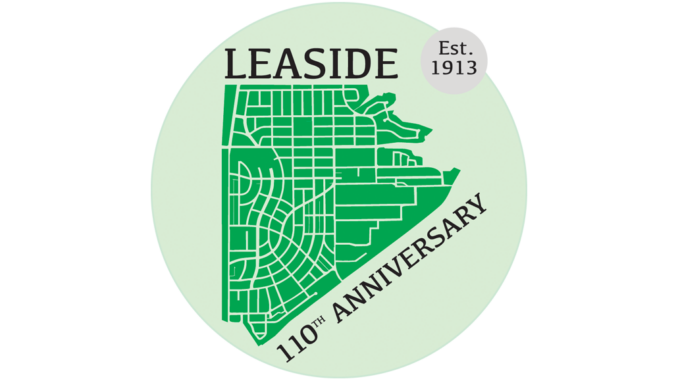
Upcoming Events
Celebrating Leaside – An Archival Exhibit at Leaside Library
- May 4th – 6th – Archival exhibit (Leaside Library)
- May 4th, 9 am – 8 pm
- May 5th, 9 am to 4 pm
- May 6th, 9 am to 4 pm
- Archival Exhibitors: John Naulls, local resident historian and cartographer, Leaside High School Alumni, Leaside Heritage Preservation Society, Leaside Memorial Community Gardens
Celebrating Leaside – other events
- May 5th and 6th, 1 p.m. – Jane’s Walk (Leaside Library)
- May 10th – Leaside 110 Anniversary Celebration (Amsterdam Brewhall) $25.00. For tickets or info email
- May 19th – Bridges to Thorncliffe Park/ Community Bazaar
- May 30th – East York Historical Society (S. Walter Stewart Library)
- Oct 12th – Leaside Garden Society – “Leaside – A Garden City?”
Community Events
- May 27th – Bessborough May Fair
- June 10th and 11th – Bayview Art Tour and Sale
- June 24th – Garden Tour (Leaside Garden Society)
- Sept 17th – Leaside Rotary Corn Roast
Memories of Leaside
“l remember my father playing pick up hockey at the side-by-side outdoor rinks at Trace Manes Park. After changing in the Centennial Building, we kids glided down a slope getting us moving onto the rink.” – Susan Lum (Durant)
“Growing up in Leaside in the 1950s felt like living in a small town. There was a milk man, an egg man, and mail was delivered twice each week day and once on Saturday.”
– Charles Rance
“Growing up in North Leaside I remember buying fudgsicles at Jerry’s Smoke and Gifts at Sunnybook Plaza and eating delicious grilled hamburgers at the Go-Go Burger restaurant on Eglinton Avenue.” – Jim Lee
Into The Next 110 Years
Anniversaries are good times to reflect on the past and plan for the future. Leaside’s built heritage, typically Georgian and Tudor Revival architecture, defines Leaside’s character and is worth protecting. To read more about the residential character guidelines, visit: leasideresidents.ca.
Leaside Facts

Canada’s first bag of air mail arrived in Leaside on June 24th, 1918. It took 7 hours and 2 stops along the way from Montreal but Captain Brian Peck and his co-pilot arrived safely, promoting the idea that aviation was the way of the future. The aerodrome was located just north of Canada Wire and Cable at Laird Drive and Wicksteed Avenue, extending north and east to Broadway Avenue. Today an historical plaque located at the Broadway/Brentcliffe parkette commemorates the first airmail flight.

Durant Motors occupied the Canada Wire and Cable factories in the 1920s, becoming the 3rd largest car manufacturer in Canada. The Durant was marketed as “Just a real good car” and was meant to be the direct competitor of GM’s Oldsmobile line.
The Durant Motors Headquarters Building at 150 Laird Drive was built in 1928, and later used as offices by the Catholic School Board. Together with the adjoining site it will become part of a new rental retirement project. The street facing and side wall facades have been retained and will be incorporated into the new building.
Town of Leaside
Leaside became an incorporated municipality by Act of the Provincial Legislature on May 7, 1913. It was the now defunct Canadian Northern Railway Company (CNorR) that bought up close to 1000 acres, much of it from William Lea, eldest son of pioneer settler John Lea. The land was east of Bayview Avenue and south of Eglinton Avenue; it was to be a railway town much like the others the company built in Vancouver and Montreal.
The CNorR hired Frederick Gage Todd, a visionary landscape architect, to lay out the new town. He designed Leaside to reflect the ideas of the garden city movement, a U.K. concept that brought residences, industry, parks and agriculture harmoniously together.
Industries
Industry came first; the residences came later than hoped due to war and economic downturns.

Canada Wire and Cable was the earliest and most successful factory in Leaside. Built in 1914 it first produced artillery shells for the war and gained a reputation for making them faster and more efficiently and economically than any other similarly sized munitions factory.

Housing

The company built houses for its workers keeping in the spirit of the garden city. The plan was for over 100 utilitarian mostly semi-detached homes to be built; 68 were completed. Most still stand on streets like Randolph, Sutherland, Airdrie, Rumsey and Kenrae. Some were built using the same bright red brick that defined the offices and factories of Canada Wire and Cable, which took up the large block that is now occu- pied by SmartCentres Leaside, at Laird Drive and Wicksteed Avenue.

The majority of Leaside residences were built in the 1930s, by reputable builders who defined the Leaside architectural character, predominantly Tudor and Georgian revival styles.
Acknowledgments:
Leaside 110 Committee; Leaside Life Toronto Public Library, Leaside Branch. Created by Mitchell Bubulj and Victoria Bubulj.
